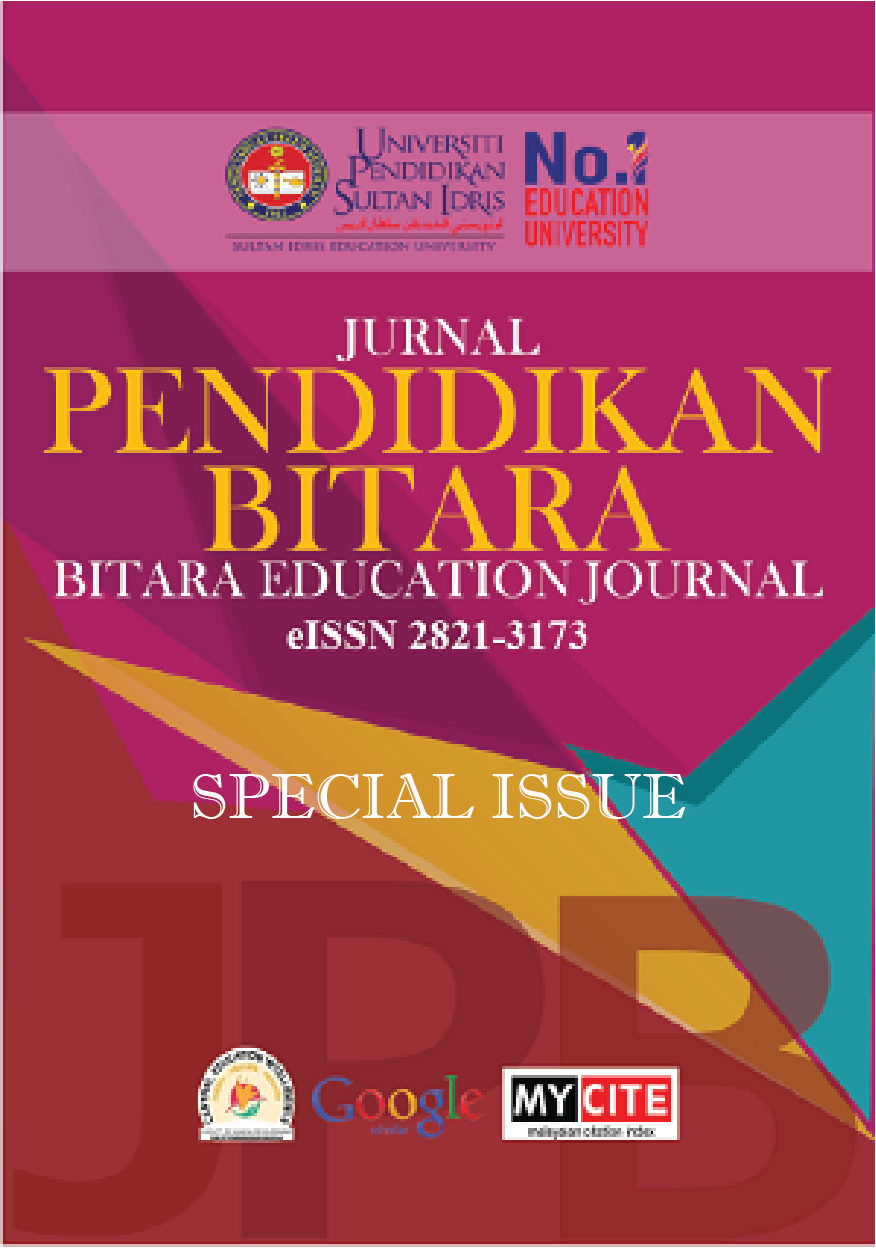Use of Teaching Aids "LPS" in Improving Writing Skills of 5 Years Old Children
Penggunaan bahan Bantu Mengajar “LPS” dalam Meningkatkan Kemahiran Menulis Kanak-Kanak 5 Tahun
DOI:
https://doi.org/10.37134/bitara.vol15.sp.16.2022Keywords:
Writing Activities, Teaching Aids, Lowercase Vowel Letters, Five Year Old ChildrenAbstract
This study aimed to look at the level of mastery of children in the activity of writing small vowel letters. This study began by identifying the problems faced by children in writing small vowel letters and then focused on the effectiveness of the use of teaching aids "LPS" that is songs, sand and slime on the improvement of children's writing skills. The study involved three five-year-old children and a preschool teacher from a preschool in Maran district, Pahang. The objective of this study is to solve the problem of writing skills among 5-year-old children through the use of teaching aids "LPS" in the classroom. The method used in this study is a qualitative method that is observation method and interview method. Data collection for this study through this observation method was implemented by looking at the results of children's work as well as pictures. Meanwhile, the interview method was conducted semi-formally based on questions from the objectives of the study. The data obtained are based on a gradual evaluation by the researcher and the experience of an experienced educator. The data of this study were analyzed using Microsoft Words. The implementation of the study is through two cycles and four phases namely planning, acting, implementing and reflecting. The findings of the study have proven that continuous repetition activities and the use of teaching aids "LPS" can improve the skills of writing small vowels for these children. Reflections on the study show that the use of teaching aids "LPS" is able to raise the spirits of children to train themselves in writing activities better. Overall, this study can provide other initiatives for educators to carry out small vowel writing activities in addition to the use of pencil and paper.
Downloads
References
Abdul Rasid Jamian. (2011). Permasalahan kemahiran membaca dan menulis Bahasa Melayu murid-murid sekolah rendah di luar bandar. Jurnal Pendidikan Bahasa Melayu, 1 (1): 1-12.
Bahagian Pembangunan Kurikulum (BPK). (2011). Panduan Kreativiti Pembangunan dan Amalan dalam Pengajaran dan Pembelajaran. Putrajaya, Malaysia: Kementerian Pelajaran Malaysia.
Diamond, K. E., & Baroody, A. E. (2013). Associations among name writing and alphabetic skills in prekindergarten and kindergarten children at risk of school failure. Journal of Early Intervention, 35(1), 20-39.
Jasmi, K. A., Ilias, M. F., Tamuri, A. H. & Mohd Hamzah, M. I. (2011). Amalan Penggunaan Bahan Bantu Mengajar dalam Kalangan Guru Cemerlang Pendidikan Islam Sekolah Menengah di Malaysia. Journal of Islamic and Arabic Education 3(1), 2011.59-74.
Md Isa, N., & Razalli, A. R. (2021). ’Let’s Play the Alphabet’ Kit Increase Special Educations Literacy Skill in Bahasa Melayu. Jurnal Pendidikan Bitara UPSI, 14, 18-31.
Puranik, C. S., Lonigan, C. J. (2011). From scribbles to scrabble: Preschool children’s developing knowledge of written language. Reading and Writing: An Interdisciplinary Journal, 24(5), 567-589.
Rashidah, R. (2013). Pembangunan dan penilaian pakej pembelajaran mudah alih komsas dalam Bahasa Inggeris tingkatan empat. Thesis PhD. University Kebangsaan Malaysia.
Reney Pantun. (2017). Penggunaan teknik nyanyian dalam meningkatkan kefahaman murid tahun dua dalam topik pembundaran. Proceedings of the ICECRS, 1(1), 677-686.
Rosli M.F. dan Omar B. (2013). Penggunaan teknik nyanyian dan mnemonik dalam meningkatkan penguasaan kata sendi nama dari pelajar tahun tiga. Kajian Tindakan PISMP 2013, 2(7).
Tameon, S. M. (2018). Peran Bermain Bagi Perkembangan Kognitif dan Sosial Anak.
Penelitian dan Pengembangan Pendidikan, 26-3.





